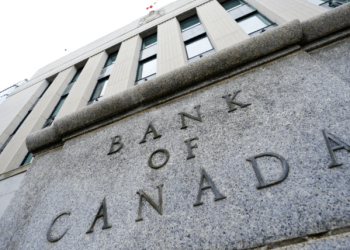Selecting the appropriate tenure for a Fixed Deposit (FD) is crucial for maximising returns and aligning with your financial objectives. The tenure you choose will determine how long your funds are locked in, directly influencing both the interest you earn and your overall financial strategy. An FD rate calculator can be an invaluable tool in this process, helping you make informed decisions by estimating the returns for different tenures. Additionally, understanding how to save tax on FD can further enhance your investment strategy. This article will guide you through the process of choosing the right FD tenure using an FD rate calculator, while also exploring tax-saving opportunities.
The Importance of Fixed Deposit Tenure
The tenure of an FD refers to the length of time your money remains invested in the deposit. It can range from as short as seven days to as long as ten years, depending on the options offered by the bank or financial institution. The tenure you select plays a pivotal role in determining the interest rate you receive, the liquidity of your funds, and the overall maturity amount.
- Short-Term vs Long-Term FDs: Short-term FDs, typically lasting from 7 days to 1 year, offer lower interest rates but provide greater liquidity. These are suitable for meeting immediate or short-term financial needs. On the other hand, long-term FDs, which can extend up to 10 years, generally offer higher interest rates, making them ideal for long-term financial goals such as retirement planning or funding a child’s education.
- Impact on Interest Rates: Generally, longer tenures attract higher interest rates. However, this is not a universal rule, as interest rates can fluctuate based on economic conditions. This variability makes it crucial to use an FD rate calculator to compare different tenures and find the one that offers the best return for your specific needs.
- Premature Withdrawal Penalties: It’s important to note that withdrawing your FD before it matures can incur penalties, which might reduce your overall returns. Therefore, choosing the right tenure from the outset can help you avoid these penalties and ensure that your investment grows as planned.
Using an FD Rate Calculator to Choose the Right Tenure
An FD rate calculator is a powerful tool that helps you estimate the returns on your Fixed Deposit based on the tenure, interest rate, and deposit amount. Here’s how to use it effectively:
- Inputting the Details: Start by entering the deposit amount, tenure, and the interest rate offered by the bank into the FD rate calculator. The calculator will then provide an estimate of the maturity amount, which includes both the principal and the interest earned over the tenure.
- Comparing Different Tenures: Use the calculator to compare the maturity amounts for different tenures. For instance, you can compare the returns from a 1-year FD versus those from a 3-year or 5-year FD. This comparison helps you understand how the interest rate and tenure interact to affect your returns, allowing you to choose the most beneficial option.
- Understanding the Compounding Effect: The calculator will also show how frequently the interest is compounded (monthly, quarterly, or annually). The more frequent interest is compounded, the higher your returns will be. Comparing the impact of different compounding frequencies across various tenures can help you choose the most advantageous option.
- Adjusting for Inflation: While using the FD rate calculator, it’s essential to consider the impact of inflation on your returns. Long-term FDs might offer higher nominal returns, but if inflation is high, the real value of your returns could be eroded over time. It’s important to strike a balance between tenure, interest rate, and expected inflation to ensure your investment retains its value.
Saving Tax on FD Investments
Fixed Deposits are not only a tool for earning returns but can also help you save on taxes. Here’s how to save tax on FD investments:
- Tax-Saving FDs: Certain FDs, known as tax-saving FDs, are eligible for deductions under Section 80C of the Income Tax Act. You can invest up to Rs. 1.5 lakh in these FDs and claim a deduction on your taxable income. These FDs have a lock-in period of five years, during which you cannot withdraw the funds. While the lock-in period might limit liquidity, the tax savings can significantly boost your effective returns.
- Avoiding TDS: If the interest earned on your FD exceeds Rs. 40,000 in a financial year (Rs. 50,000 for senior citizens), the bank will deduct TDS (Tax Deducted at Source). To avoid this, you can split your investments across different banks or submit Form 15G/15H if your total income is below the taxable limit. Managing your FD investments in this way can help you retain more of your earnings.
- Calculating Post-Tax Returns: Use the FD rate calculator to estimate your post-tax returns. This involves factoring in the tax that will be deducted from the interest earned. Understanding your post-tax returns helps you make better decisions about where and how much to invest. This is particularly important if you are in a higher tax bracket, as the post-tax returns could significantly impact your overall earnings.
- Reinvesting Maturity Proceeds: Upon maturity, you can reinvest the proceeds in another tax-saving FD or explore other tax-efficient investment options. Reinvesting in tax-saving FDs can help you continue to save tax while benefiting from stable returns. This strategy also takes advantage of the power of compounding, further increasing your long-term wealth.
Strategies for Choosing the Optimal Tenure
Choosing the right tenure for your FD requires careful consideration of your financial goals, liquidity needs, and tax implications. Here are some strategies to help you decide:
- Align with Financial Goals: If you have a specific financial goal, such as buying a car or funding a vacation, choose an FD tenure that matches your timeline. This ensures that the funds are available when you need them without incurring penalties for premature withdrawal. For instance, if you plan to buy a car in three years, selecting a three-year FD ensures that your investment matures just in time to make the purchase.
- Consider Laddering: Laddering involves dividing your investment into multiple FDs with different tenures. This strategy provides liquidity at regular intervals and allows you to take advantage of changing interest rates. For example, you might invest in 1-year, 3-year, and 5-year FDs simultaneously. As each FD matures, you can reinvest it at the prevailing interest rate, potentially securing better returns while keeping some funds accessible.
- Balance Between Short-Term and Long-Term Needs: If you anticipate needing some funds in the near future, allocate a portion of your investment to short-term FDs while keeping the rest in long-term FDs for better returns. This approach ensures that you have access to funds when necessary while still benefiting from higher interest rates on the long-term portion of your investment.
- Monitor Economic Conditions: Interest rates fluctuate based on economic conditions. During periods of rising interest rates, it may be wise to opt for shorter tenures and reinvest later at higher rates. Conversely, if rates are expected to fall, locking in a longer tenure could be more beneficial. Keeping an eye on economic trends and adjusting your FD tenure accordingly can help you maximise your returns.
Conclusion
Choosing the right Fixed Deposit tenure is essential to maximising your returns and meeting your financial goals. An FD rate calculator is an invaluable tool in this process, helping you compare different tenures and understand the impact of compounding on your returns. Additionally, by exploring tax-saving opportunities, such as investing in tax-saving FDs, you can further enhance your investment strategy and save tax on FD returns. By carefully considering your financial goals, liquidity needs, and the current economic environment, you can select the optimal FD tenure that provides the best balance between safety, returns, and tax efficiency.











